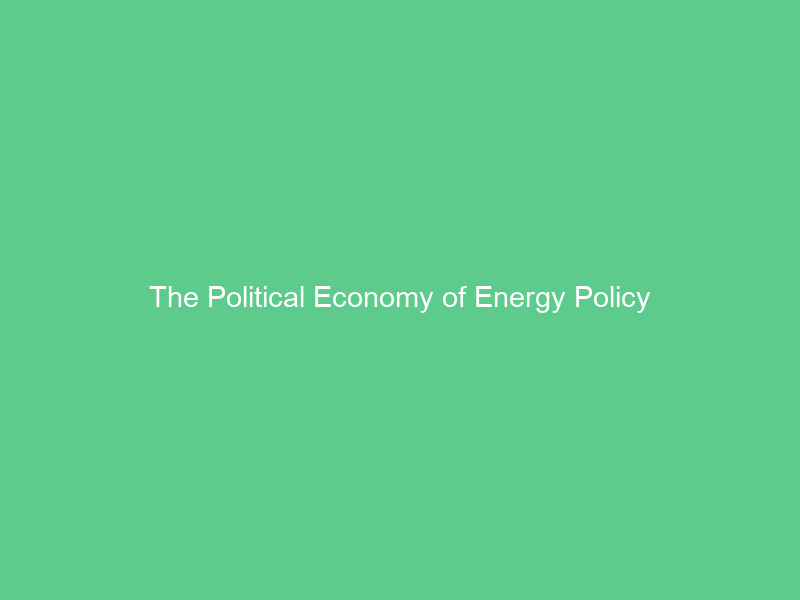Energy policies drive decisions regarding production and consumption of energy resources, and involve organizations from local governments to international trade organizations.
Energy development must include new and expanded protections for iconic landscapes and ensure taxpayers receive fair compensation for their natural resources. Furthermore, development should avoid having harmful impacts such as fracking or pipeline construction on vulnerable lands.
Policy Instruments
Energy policy instruments come in various forms. One way of categorizing them is based on economic impact: these policy tools may either be market- or nonmarket-based.
Market-based policy instruments influence behavior by altering actors’ economic incentives structure. Typically, they do this by reflecting costs from environmental externalities in product prices (such as carbon taxes or environmental charges) or incentives like subsidies for investment in green technologies or loan guarantees for renewable energy projects.
Non-market-based policy instruments tend to be informational and aim at changing actor behaviors by raising awareness or setting moral standards, for instance through product labelling, voluntary agreements with polluters or information campaigns. Such instruments may also be combined with market-based instruments in order to maximize effectiveness.
Policy Targets
Energy policies aim to meet specific strategic goals – be they to reduce oil demand, diversify electricity supply, strengthen infrastructure or enhance air quality; as well as attract equity for a sustainable and equitable energy transition. Policy makers rely on high-quality statistics and modelling when crafting energy policies.
Models provide projections and exploratory scenarios of potential futures, comparing costs and benefits of options against a business-as-usual scenario. To be accurate and helpful, these models require access to both large quantities and quality energy data sets.
Subsidies, tax credits, direct spending or research grants may all act as financial inducements that influence energy-related decisions. Other policies use external constraints – building energy codes and air quality standards – to guide behaviors related to energy use. Energy policies may also be affected by other government policies like military expenditure and industrial development; energy may even compete for funding and resources with other sectors like food, health or environmental sectors.
Policy Implementation
Create an energy policy is a complex undertaking that involves multiple stakeholders with diverse agendas ranging from economic development, geopolitical security and climate action. Each group’s ability to influence decision makers varies; political science can shed light on how these differences influence policy outcomes.
An essential step in creating an effective energy policy for any organization is securing ownership. Evidence of this can include signing statements by top management or minutes from recorded meetings proving commitment to energy as a strategic priority.
Once a policy is in place, its next step should be monitoring it to assess whether or not it’s working as intended. To do this effectively requires engaging statisticians from its design phase onwards – including collecting data accurately to measure performance against its respective policy.
Policy Monitoring
Policy monitoring is an integral component of effective governance, serving to evaluate how policy goals have been accomplished. At its best, policy monitoring should help steer policy and promote accountability among those involved.
Statisticsians play an essential role in this policy area by collecting, recording and producing relevant data that helps monitor their policies.
Energy policies offer numerous monitoring methods. This may involve evaluating business-as-usual conditions, exploring normative scenarios against specific targets or using models to assess feasibility.
This report’s goal is to evaluate and systematize EP effectiveness categories reported through selected documents and link them with appropriate indicators, serving as a foundation for future work on energy policy evaluation.

